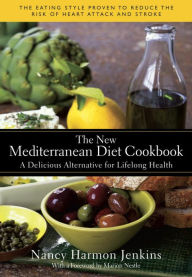The best Mother's Day gift for any mom who loves to cook.
For over fifty years, New York Times bestseller Mastering the Art of French Cooking has been the definitive book on the subject for American readers. Featuring 524 delicious recipes, in its pages home cooks will find something for everyone, from seasoned experts to beginners who love good food and long to reproduce the savory delights of French cuisine, from historic Gallic masterpieces to the seemingly artless perfection of a dish of spring-green peas. Here Julia Child, Simone Beck, and Louisette Bertholle break down the classic foods of France into a logical sequence of themes and variations rather than presenting an endless and diffuse catalogue of dishes. Throughout, the focus is on key recipes that form the backbone of French cookery and lend themselves to an infinite number of elaborations—bound to increase anyone’s culinary repertoire. With over 100 instructive illustrations to guide readers every step of the way, Mastering the Art of French Cooking deserves a place of honor in every kitchen in America.
Read More
From the Publisher
Praise for Julia Child and Mastering the Art of French Cooking
"Has it really been 40 years since Julia Child rescued Americans from dreary casseroles? This reissue, clad in a handsome red jacket, is what a cookbook should be: packed with sumptuous recipes, detailed instructions, and precise line drawings. Some of the instructions look daunting, but as Child herself says in the introduction, 'If you can read, you can cook.'" —Entertainment Weekly
“Julia Child paved the way for Chez Panisse and so many others by demystifying French food and by reconnecting pleasure and delight with cooking and eating at the table. She brought forth a culture of American ingredients and gave us all the confidence to cook with them in the pursuit of flavor.” —Alice Waters, Chez Panisse
“Mastering the Art of French Cooking was one of my first introductions to my foundation of understanding the art of French cooking. The combination of reading Julia’s book, working in the kitchen, and watching her television shows helped lead me to my beginnings in serious cuisine. Julia is . . . the grande dame of cooking, who has touched all of our lives with her immense respect and appreciation of cuisine.” —Emeril Lagasse, Emeril’s Restaurant
“Julia has slowly but surely altered our way of thinking about food. She has taken the fear out of the term ‘haute cuisine.’ She has increased gastronomic awareness a thousandfold by stressing the importance of good foundation and technique, and she has elevated our consciousness to the refined pleasures of dining. Through the years her shows have kept me in rapt attention, and her humor has kept me in stitches. She is a national treasure, a culinary trendsetter, and a born educator beloved by all.” —Thomas Keller, The French Laundry
“Julia freed the American public from their fears of cooking French. By doing so, she greatly expanded the audience for all serious food writers. Her demystification prepared that public for the rest of us. I believe that the television shows based on that landmark book did even more to encourage reluctant cooks to try their hands . . . much to our benefit.” —Mimi Sheraton
“1961 A.D. Julia Child’s Mastering the Art of French Cooking is published. Her black-and-white TV show on WGBH in Boston soon follows. Child is one of the great teachers of the millennium: She is intelligent and charismatic, and her undistinguished manual skills are not daunting to her viewers. An entire generation of ambitious American home cooks is instantly born.” —Jeffrey Steingarten
bn.com
The book that started it all. When Mastering the Art of French Cooking, the product of nearly a decade of work, was first released in 1961, it started a revolution.
No single cookbook has influenced more chefs or inspired more home cooks to try something ambitious, authentic, and refined on their own. It changed the face of food writing as well, with its precisely detailed instructions and ingredient lists. As Paula Wolfert is quoted as saying in Noël Riley Fitch's biography of Julia Child, "Just as it's been said that all Russian literature has been taken from Gogol's overcoat, so all American food writing has been derived from Julia's apron." A tattered copy of the first edition can be found in just about every baby boomer's kitchen.
Read More





















